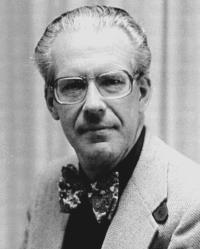1992
A native of Groningen, Maarten Schmidt earned his bachelor's degree at the University of Groningen. While a graduate student at Leiden University, he spent a year operating an observatory and measuring stellar positions for the second Leiden expedition in Kenya. He returned to Leiden to participate in the first radio survey of the northern sky, using the 21-cm line to measure radial velocities of hydrogen clouds and thus map out the spiral arms in half of the Galaxy. He earned his Ph.D. in 1956 under Jan H. Oort with a thesis on the mass distribution in the Galaxy as determined from rotation curves obtained from 21-cm observations. He spent the next two years as a Carnegie Fellow at the Mt. Wilson and Palomar Observatories, returned to Leiden for one year, and then joined the faculty of the California Institute of Technology, where he stayed for the rest of his life. He formally retired in 1996 but continued publishing research for more than a decade. At first he continued working on the mass distribution and dynamics of the Galaxy, including the exchange of matter between stars and gas clouds. When Rudolph Minkowski retired, Schmidt took over his project of taking spectra of objects which had been found to be radio emitters. In 1963 he identified the first quasar, showing that these starlike objects exhibit ordinary hydrogen lines, but at redshifts far greater than those observed in stars. After that he investigated the evolution and distribution of quasars, discovering that they were more abundant when the universe was younger, one of the major reasons for the decline in favor of steady state models of the universe. He and his colleagues found that the abundance of quasars was a maximum at an early time (a redshift of about 2.5), and that they were less abundant at very early times, and he long sought to find the redshift above which there are no quasars. In later years he joined teams finding x-ray and gamma ray sources from orbiting observatories such as ROSAT and the Compton Gamma Ray Observatory. He then obtained their optical spectra at the Keck Observatory. He spent several years as an administrator at Caltech, heading astronomy from 1972-75 and the physics, mathematics and astronomy division for the next three years. From 1978-80 he served as the last director of the Hale Observatories before initiating the divorce of Caltech and its Palomar Observatory from the Carnegie Institution of Washington and its Mount Wilson Observatory.
Presentation of Bruce medal
Cowley, Anne, Mercury 21, 6, 197-198 (1992).
Other awards
American Academy of Arts & Sciences, Rumford prize, 1968.
American Astronomical Society, Helen B. Warner Prize, 1964; Henry Norris Russell Lectureship, 1978.
Astronomische Gesellschaft, Karl Schwarzschild Medal, 1968.
Kavli Foundation, Kavli Prize for Astrophysics, 2008
National Academy of Sciences, James Craig Watson Medal, 1991.
National Radio Astronomy Observatory, Jansky Lectureship, 1979.
Royal Astronomical Society, Gold medal, 1980.
Some offices held
American Astronomical Society, President, 1984-86.
Biographical materials
New Netherlands Institute
Schmidt, Maarten, interview with Alan Lightman, in Lightman, Alan & Roberta Brawer, Origins: The Lives and Worlds of Modern Cosmologists (Harvard Univ. Press, Cambridge, UK, 1990), pp. 102-19.
Schmidt, Maarten, Autobiography on receiving the Kavli Prize, 2008
Schmidt, Maarten, “Exploring the Universe,” Ann. Rev. Astron. & Astrophys. 53, 1-14 (2015) [includes videos].
Obituaries
California Institute of Technology, 19 Sept 2022
Schneider, Donald P., Physics Today, 76(1), 59 (2023).
Academic genealogy
Portraits
Caltech Archives [several]
AIP Center for History of Physics [several]
Time Magazine cover, 11 March 1966 [painting]
